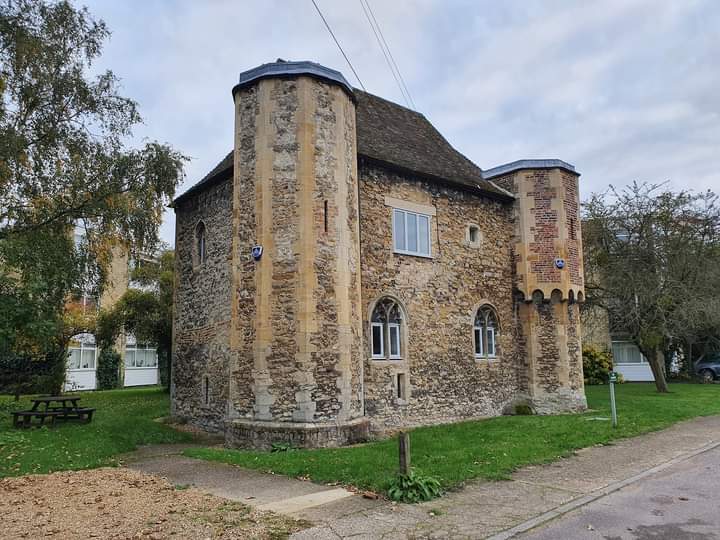
Our Cambridge Correspondent
I grew up in Cambridge and have lived here permanently since 2006. I thought I knew it well. I was wrong. One of my most interesting lockdown activities has been discovering new parts of the city and new buildings.It started with a walk. Or rather, a Sunday lunch in a pub (on one of the few occasions in 2020 when that was possible), followed by a longer loop along the river to get home.
We walked along Riverside, intending to cut through Chesterton to our house in Arbury. For some reason, instead of going down Church Street as we usually would, my partner Chris suggested cutting down Chapel Street instead. There was no real reason for this, other than it was a Sunday afternoon and we had nowhere particular to be.
Halfway down Chapel Street, amid some unremarkable flats, was a building neither of us had seen before – what looked like an old miniature castle, nestled in the depths of Chesterton. It looked like it was on private land, but we had a look around and took some photos anyway. We saw the arrow slits and noted it was now a language school called Blue Bridge Education. When we got home, I put the photo on Facebook, asking if anyone knew what it was. It turned out it was the Chesterton Tower. The building dates from the mid-14th Century, when Chesterton was a royal manor.
Following the death of King John, the Barons, who had been in constant conflict with the King, invited a French prince to be king, in place of the then-7-year-old Prince Henry. Keen to avoid civil war, a papal legate Cardinal Guala came to England to arbitrate. Guala appointed Henry III to the throne. To show gratitude for this Henry gave the royal manor of Chesterton to Guala, with the Church of St Andrew. Guala then passed the gift to the Abbey of Vercilli. The abbot appointed a proctor, who was to live in Chesterton. This was the proctor’s house, and at the time it occupied the grounds of St Andrew’s church, though it is now a housing estate. A copy of Cardinal Guala’s portrait hangs on the wall of the south aisle of St Andrew’s Church.
In 1440, the pope agreed to transfer the church and the tower to King’s Hall, which became Trinity College. The 1959 Royal Commission Survey of Cambridge said of the building:
“The tower is a rare survival of a dwelling for the representative of England of a foreign appropriator and of much architectural interest despite the recent restoration.”
I’ve lived in Cambridge for 35 years. All these facts were completely new to me. Chesterton Tower is certainly not on any tourist trail that I’m aware of, and I can’t imagine it appears on many punt tours either. It struck me that if there can be a 14th Century palace hiding away in Chesterton, owned by Trinity College but largely ignored, there could be more such places …
